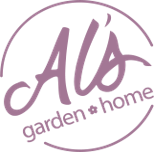Pollinators are an essential part of our ecosystem. Bees, butterflies, birds, and other animals are responsible for pollinating over 75% of the world's crops, making them crucial for our food supply. However, these pollinators are facing numerous threats, including habitat loss, pesticide use, and climate change. One way we can help protect them is by planting pollinator-friendly plants in our gardens. Choosing the right pollinator plants can be challenging, especially for those who are new to gardening. We’ll explore what pollinator plants are and which ones to choose for your garden and containers.
What are pollinator plants? Pollinator plants consist of flowering annuals, perennials, and shrubs that attract pollinators, such as bees, butterflies, beetles, bats, hoverflies, and hummingbirds, with their flowers. These plants provide a valuable source of nectar and pollen for these animals, which they need for energy and reproduction.

Choosing the right pollinator plants
When selecting pollinator plants for your garden or containers, there are a few things to consider.
- Flower color - Pollinators are attracted to a range of colors, including red, purple, blue, and yellow. By planting a variety of flowers in different colors, you can attract a diverse range of pollinators to your garden.
- Bloom time - Pollinators need a continuous source of nectar and pollen throughout the growing season. By planting a mix of early, mid, and late-season bloomers, you can provide a consistent food source for pollinators from spring through fall.
- Plant diversity - Pollinators are attracted to a diverse range of plants. By planting a mix of native and non-native species, you can create a habitat that supports a variety of pollinators.
- Pesticide use - Pesticides are harmful to pollinators and can kill them. When choosing pollinator plants, select species that are resistant to pests and diseases or use natural pest control methods instead of pesticides.
Best pollinator plants for your garden
Here are some of the best pollinator plants to choose for your garden.
|
Yellow blooms tipped with orange. Summer bloomer. |
Great for mixed containers and baskets. Bee magnets. |
|
|
Borage |
Blue star-like flowers. Blooms all summer. |
Flowers and foliage have a mild cucumber flavor. Attractive to bees. |
|
Evergreen shrub with striking blue flowers. Blooms May-June. |
Slightly fragrant, needs full sun. Magnet for hummingbirds, bees, and butterflies. |
|
|
Catnip |
Perennial herb with blooms. Shows off July-September. |
Has a minty kick. Hummingbirds, moths, butterflies, and bees flock to the blooms. |
|
Flowers come in a rainbow of colors. Blooms June-August. |
Loved by bees and butterflies. Seeds are food for birds later in the season. |
|
|
Blooms all season and drought tolerant once established. Brightly colored blooms in variety of colors. |
Hummingbirds and bees are attracted to the colors, |
|
|
Honeysuckle |
Hardy vine, can be grown as ground cover. Trumpet-shaped fragrant blossoms. Summer bloomer. |
Butterflies and hummingbirds feast on their nectar. |
|
Spanish varieties have pineapple shaped blooms. English varieties have long flowering spikes in purple and blue. |
Loved by both bees and butterflies. Blooms late spring into late summer. |
|
|
Umbrella shaped tree with delicate pink buds and white blooms. Blooms in April. |
Literally all “abuzz”. Showstopper with a sprawling canopy. |
|
|
Variety of shapes, sizes, and colors. Aromatic foliage blooms in the spring. Summer varieties too. |
Bee and butterfly, and hummingbird magnet. |
|
|
Gray-green foliage, extremely aromatic. Produces small white flowers. Blooms July-September. |
Compact plants, evergreen, good for containers and garden borders. Loved by butterflies and bees. |
|
|
4” diameter blooms in a range of colors. Bloom June-September. Great cut flower to enjoy indoors. |
Butterflies and bees love the bright colors. |
Planting pollinator-friendly plants is an excellent way to support our essential pollinators. By choosing a mix of native and non-native species in a range of colors and bloom times, you can create a diverse habitat that supports a variety of pollinators. You will be supporting the first step in fruit and seed production while constructing an outdoor show of color and activity to enjoy throughout the seasons.



Leave a comment